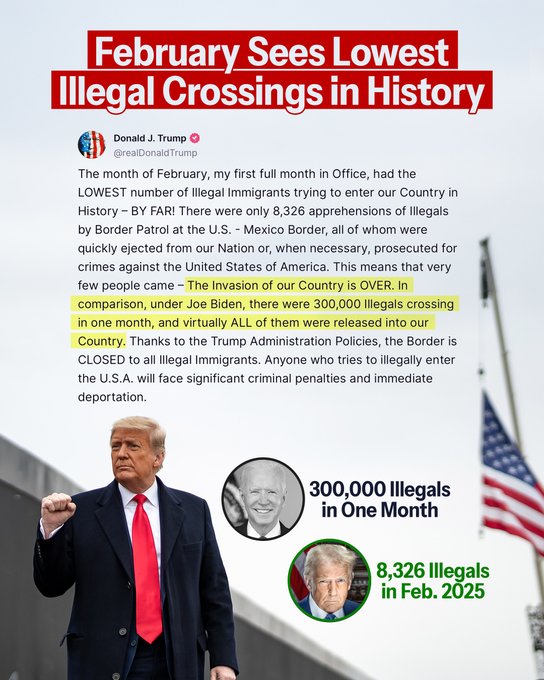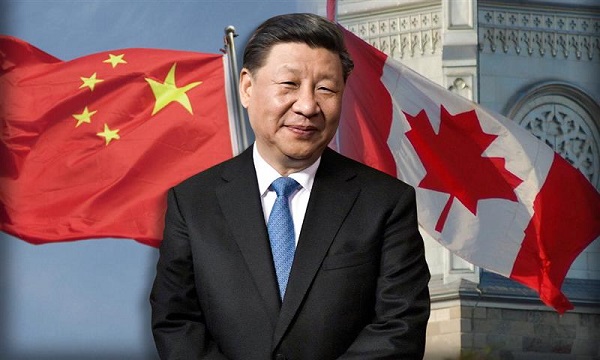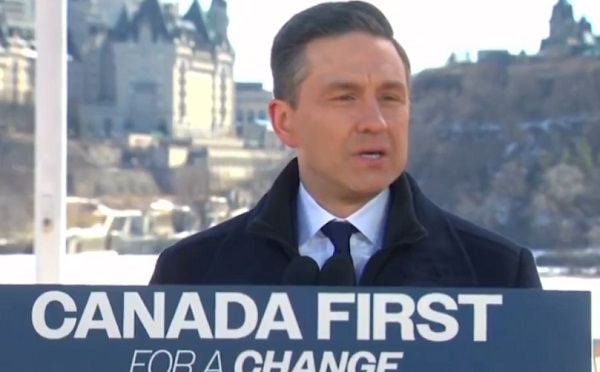illegal immigration
Renewed calls to end Chicago’s sanctuary status ahead of expected migrant surge
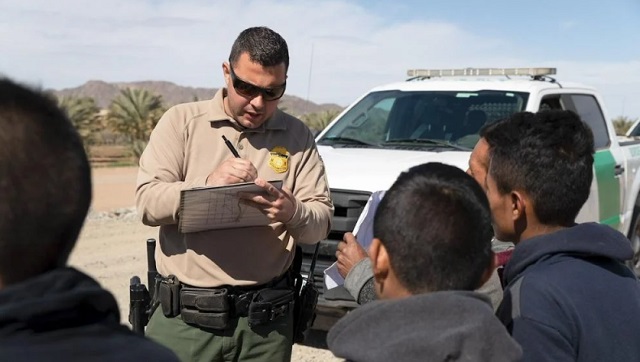
From The Center Square
By
With the city of Chicago already spending as much as $1.5 million a day for migrant housing and thousands of new arrivals expected in the weeks ahead, local activist Tio Hardiman is renewing his call for the city to reverse its sanctuary city status.
For the past two years, Chicago has received more than 45,000 foreign nationals from the southern U.S. border, where border communities have been inundated with border crossers. The taxpayer costs for Illinois and the city of Chicago continue with the new state budget that started this month setting aside more than $900 million for health care, housing, food and even legal subsidies.
Texas Gov. Greg Abbott recently went on record with his plan to continue busing people to Chicago, where local law enforcement are prohibited from assisting enforcement of federal immigration laws. Earlier this week, a Chicago City Council committee heard from the budget director they have not budgeted for the expected surge.
Chicago Mayor Brandon Johnson was asked about the potential of thousands of more non-citizen migrants being transported to the city leading up to the Democratic National Convention next month.
“We have right now, currently, roughly 5,600 new arrivals that are still in our shelters. Our collective resources are prepared for as many as 15,000 but we certainly hope that Gov. Abbot finds Jesus Christ as his lord and savior and don’t do that,” Johnson said Thursday.
Hardiman said he’s had enough of all the politics coming from both sides.
“The Democrats may be looking at the migrant situation like, in the next two or three years, all those migrants will become registered voters,” he said. “The Republicans are looking from a lens where they’re trying to penalize some of the Democratic cities.”
Overall, the city has paid out at least $185 million to care for migrants over the last six months. Hardiman said policies have to change.
“Let’s bring an end to sanctuary cities because the city is not prepared,” Hardiman said.
Hardiman’s calls for the city to reverse course goes back to 2023, when he argued state lawmakers were not doing nearly enough to help the longtime downtrodden residents of the state and that its newfound migrant problem is one wholly created by bad policy.
All the runaway spending sends a clear and irrefutable message, he said.
“The state, city and county have already spent close to … $800 million or more on the immigrant crisis here, and all those resources are going to the illegal immigrants and the resources should be going to those that are already here struggling each and every day,” he said. “The message is going out that elected officials care more about the illegal immigrants than they care about the people that have been there their whole life struggling.”
Through all the back and forth, Hardiman said one thing remains clear to him.
“I’m never going to sit up and agree that we should be a sanctuary city and allow illegal immigrants to come over and receive all the resources in this state and you got people here starving right now,” he said.
The surge of migrants is expected to coincide with the Democratic National Convention that begins in Chicago Aug. 19.
illegal immigration
Court attempts to halt Trump deportations, El Salvador president says ‘too late’
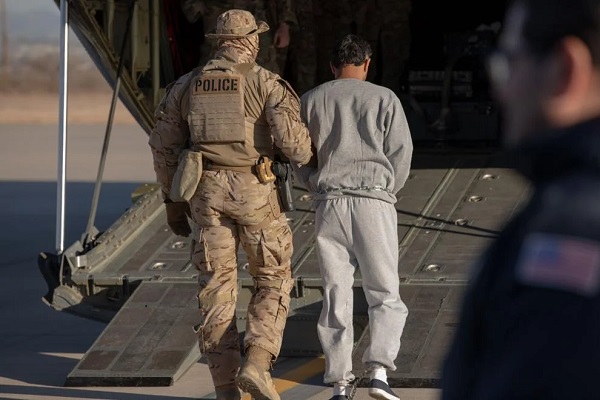
From The Center Square
By
A class action lawsuit was filed on Saturday against the Trump administration after President Donald Trump signed an executive order invoking the Enemy Aliens Act to target, arrest and remove violent Venezuelan prison gang members, Tren de Aragua (TdA), from the U.S.
The lawsuit was filed by the American Civil Liberties Union Foundation on behalf of five Venezuelans illegally in the country who were detained in Texas and New York. The lawsuit was filed in U.S. District Court for the District of Columbia.
On Saturday, nearly 300 violent illegal foreign nationals were removed from the U.S. and arrived in El Salvador with the cooperation of El Salvadoran president Nayib Bukele after reaching an agreement with Secretary of State Marco Rubio.
“The first 238 members of the Venezuelan criminal organization, Tren de Aragua, arrived in our country,” Bukele said in a post on X. “They were immediately transferred to CECOT, the Terrorism Confinement Center, for a period of one year (renewable).”
El Salvador also received 23 MS-13 gang members from the U.S. who were wanted by Salvadoran authorities, Bukele said. They include two ringleaders, one of whom “is a member of the criminal organization’s highest structure.” Those sent to El Salvador by the U.S. will help Bukele’s government “finalize intelligence gathering and go after the last remnants of MS-13, including its former and new members, money, weapons, drugs, hideouts, collaborators and sponsors.
“As always, we continue advancing in the fight against organized crime. But this time, we are also helping our allies, making our prison system self-sustainable, and obtaining vital intelligence to make our country an even safer place. All in a single action. May God bless El Salvador, and may God bless the United States,” he said.
The U.S. government is paying a small fee to detain them, Bukele said, and the prison is also making money because it requires inmates to work. These additional inmates, “combined with the production already being generated by more than 40,000 inmates engaged in various workshops and labor under the Zero Idleness program, will help make our prison system self-sustainable,” he said, noting that it costs $200 million a year to maintain.
In response, Rubio thanked Bukele saying, “El Salvador has agreed to hold the violent criminals “in their very good jails at a fair price that will also save our taxpayer dollars. President Nayib Bukele is not only the strongest security leader in our region, he’s also a great friend of the U.S.”
In an emergency hearing held on Saturday, a federal judge ruled that deportations of violent Venezuelans be temporarily halted and those who were illegally in the country and already removed be returned. The ACLU said the order blocked the administration “from deporting anyone under the Alien Enemies Act while the case proceeds. Flights carrying Venezuelan immigrants the DHS attempted to deport have been ordered to turn around and return to the U.S.”
A U.S. federal judge has no jurisdiction over foreign governments.
In response, Bukele posted on X, “Oopsie … Too late,” with a laughing emoji.
Bukele also posted videos and pictures of them arriving in El Salvador in handcuffs. The video shows them being met by El Salvadoran military wearing riot gear and transported in armored vehicles to CECOT. The videos depict El Salvadoran officials lifting up their shirts to show tattoos of gang member affiliation, officials shaving the heads of kneeling inmates and their admittance as CECOT inmates.
Today, the first 238 members of the Venezuelan criminal organization, Tren de Aragua, arrived in our country. They were immediately transferred to CECOT, the Terrorism Confinement Center, for a period of one year (renewable).
The United States will pay a very low fee for them,… pic.twitter.com/tfsi8cgpD6
— Nayib Bukele (@nayibbukele) March 16, 2025
Cooperation between the U.S. and El Salvador expanded under Trump and Rubio, representing a reversal of Biden administration policy that used taxpayer money and planes to transport illegal foreign nationals into the U.S.
Trump has been aggressively targeting of TdA after a record more than 1 million Venezuelans illegally entered the U.S. under the Biden administration, including TdA members expanding operations in at least 22 states, The Center Square first reported.
Under the Trump administration, Venezuelan repatriation flights also began, paid for by the Venezuelan government, negotiated by the Trump administration, The Center Square reported.
illegal immigration
“The Invasion of our Country is OVER”: Trump reports lowest illegal crossings in history
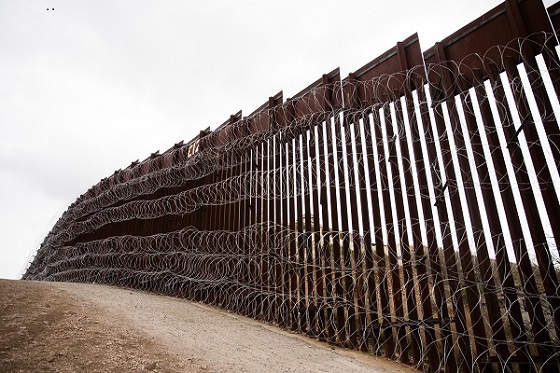
 MxM News
MxM News
Quick Hit:
President Donald Trump announced on Saturday that illegal immigrant apprehensions at the southern border plummeted to just 8,326 in February—marking a historic low. In a Truth Social post, Trump declared, “The Invasion of our Country is OVER,” crediting his administration’s tough enforcement measures for the drastic reduction.
Key Details:
-
The figure represents a staggering 96% drop from December 2023, when illegal crossings under Joe Biden’s administration peaked at 301,981.
-
Trump emphasized that those caught illegally entering the U.S. were “quickly ejected from our Nation or, when necessary, prosecuted for crimes against the United States of America.”
-
Trump credited executive action, including an emergency border declaration, military deployments, the end of birthright citizenship, and a crackdown on sanctuary cities, for the sharp decline in illegal entries.
Diving Deeper:
President Trump’s first full month back in office saw a seismic shift in border security policy, leading to what he called “the lowest number of illegal border crossings in decades.” In a Truth Social post on Saturday, Trump highlighted the stark contrast between his administration and Biden’s, stating:
“This means that very few people came – The Invasion of our Country is OVER. In comparison, under Joe Biden, there were 300,000 Illegals crossing in one month, and virtually ALL of them were released into our Country. Thanks to the Trump Administration Policies, the Border is CLOSED to all Illegal Immigrants.”
Upon taking office, Trump signed multiple executive orders that significantly curtailed illegal immigration. These include reinstating policies that allow expedited removals, deploying U.S. troops to the southern border, resuming construction of the border wall, and ending Biden-era programs that facilitated migrant entry through humanitarian parole. Additionally, the Department of Homeland Security (DHS) reversed previous Biden restrictions on Immigration and Customs Enforcement (ICE), leading to a sharp uptick in interior enforcement.
According to DHS data obtained by Fox News Digital, ICE interior arrests skyrocketed by 137% in just three weeks, with 11,791 arrests recorded from Jan. 20th to Feb. 8th—compared to 4,969 during the same period in 2024. High-profile raids in sanctuary cities have also yielded thousands of arrests, including gang members and violent offenders.
The economic impact of Trump’s border policies is already being felt. Federal funds that had been allocated to house illegal immigrants in hotels, particularly in cities like New York, are being clawed back. A recent executive order directed all federal agencies to identify and cut off taxpayer-funded programs that benefit illegal immigrants.
Despite congressional gridlock preventing any new border legislation, Trump’s administration has relied solely on executive authority to crack down on illegal immigration. His message to potential border crossers remains clear: “Anyone who tries to illegally enter the U.S.A. will face significant criminal penalties and immediate deportation.”
-

 2025 Federal Election1 day ago
2025 Federal Election1 day agoPoilievre To Create ‘Canada First’ National Energy Corridor
-
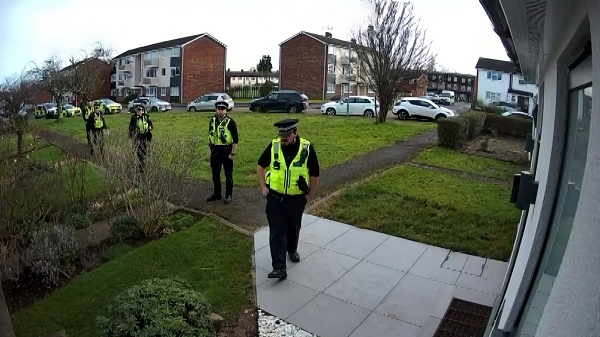
 Censorship Industrial Complex2 days ago
Censorship Industrial Complex2 days agoWelcome to Britain, Where Critical WhatsApp Messages Are a Police Matter
-

 2025 Federal Election1 day ago
2025 Federal Election1 day agoJoe Tay Says He Contacted RCMP for Protection, Demands Carney Fire MP Over “Bounty” Remark
-

 2025 Federal Election2 days ago
2025 Federal Election2 days agoChinese Election Interference – NDP reaction to bounty on Conservative candidate
-

 2025 Federal Election1 day ago
2025 Federal Election1 day agoHong Kong-Canadian Groups Demand PM Carney Drop Liberal Candidate Over “Bounty” Remark Supporting CCP Repression
-

 Daily Caller15 hours ago
Daily Caller15 hours agoBiden Administration Was Secretly More Involved In Ukraine Than It Let On, Investigation Reveals
-

 2025 Federal Election1 day ago
2025 Federal Election1 day agoFixing Canada’s immigration system should be next government’s top priority
-

 2025 Federal Election1 day ago
2025 Federal Election1 day agoLondon-Based Human Rights Group Urges RCMP to Investigate Liberal MP for Possible Counselling of Kidnapping


